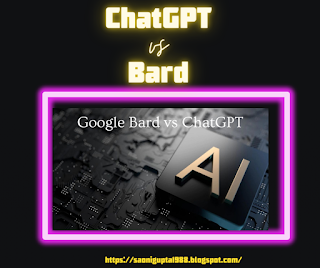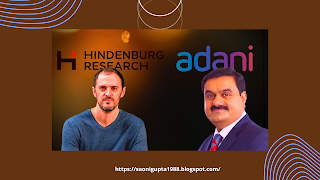Last-Mile Delivery: A Solution to Speedy Delivery
Introduction
As the world of e-commerce continues to grow, so does the demand for fast and efficient delivery services. Delivering products from a distribution center to a customer's door is known as last-mile delivery. This final stage of the delivery process is often the most expensive and logistically challenging. This blog will explore the importance of last-mile delivery, its advantages and disadvantages, the factors to optimize it for maximum efficiency, the benefits of optimizing, and strategies to improve last-mile delivery efficiency.
What is Last-Mile Delivery?
The term "last-mile delivery" describes the method of transporting items from a distribution center (warehouse, hub, or store) to the ultimate location, which is frequently a customer's home. This requires coordination between multiple parties, such as retailers, warehouses, carriers, and drivers.
Last-mile delivery has become increasingly popular in recent years due to the rise of e-commerce and omni-channel distribution. This type of delivery service offers multiple benefits to businesses, such as improved customer satisfaction, increased brand visibility, and increased revenue.
Importance of Last-Mile Delivery
Last-mile delivery is a critical component of delivering goods from warehouses and factories to consumers. It is a vital part of the overall supply chain and is becoming increasingly important to businesses and the economy to meet consumer demands for better and faster delivery services.
Last-mile delivery can be divided into two categories: B2B (business-to-business) and B2C (business-to-consumer). B2B last-mile delivery involves the transportation of goods from one business to another, while B2C last-mile delivery involves the transportation of goods from a business to a consumer.
Due to the growing popularity of e-commerce and the increasing expectations of customers for fast delivery, last-mile delivery has become an essential part of the business landscape. This type of delivery is becoming increasingly important to businesses and the economy, as it allows companies to quickly and efficiently get their goods to customers.
Additionally, last-mile delivery can help businesses reduce their costs, improve their customer service, and increase their sales. For businesses, optimizing last-mile delivery is essential to ensuring that goods are delivered on time and in good condition while also keeping costs down.
Advantages of Last-Mile Delivery
One of the primary benefits of last-mile delivery is that it can significantly reduce delivery times. By utilizing a streamlined delivery process, goods can be delivered faster and more efficiently. This can be beneficial for customers who require their items quickly as well as businesses that want to ensure that their products are delivered in a timely manner.
Last-mile delivery can also help improve customer service. By utilizing a more efficient delivery process, customers can receive faster and more reliable service. This can result in improved customer satisfaction, which can lead to increased sales and more loyal customers.
Finally, last-mile delivery can provide companies with cost savings. By utilizing a streamlined delivery process, businesses can reduce their overall shipping costs. This can help companies reduce their operating costs, which can result in increased profits.
Disadvantages of Last-Mile Delivery
Traffic congestion in urban areas is a major challenge for last-mile delivery. Delivery trucks often struggle to navigate through congested roads, leading to delays, missed deliveries, and customer complaints. According to a study, traffic congestion is responsible for up to 40% of total delivery costs.
Additionally, last-mile delivery is also vulnerable to theft, fraud, and other forms of criminal activity. Packages left on doorsteps or in unsecured areas are at risk of theft, and drivers may be targeted by criminals while making deliveries.
Expenses associated with last-mile delivery, which can make up to 53% of the overall logistics cost, are another possible drawback. The cost of delivering goods to their destination can quickly add up, and businesses may need to invest in additional resources to ensure that items are delivered in a timely manner.
Finally, in many urban areas, delivery vehicles are not allowed to access certain areas due to regulations or physical barriers such as narrow streets or low bridges. This can make it difficult for delivery companies to reach customers in these areas.
Overall, last-mile delivery can be a valuable tool for businesses, but it is important to consider the potential advantages and disadvantages before investing in the process. By carefully managing the last-mile delivery process, businesses can ensure that their products are delivered in a timely and cost-effective manner.
Factors to Optimize Last-Mile Delivery
Last-mile delivery is one of the most important steps for customers. As such, it is important to optimize last-mile delivery in order to ensure maximum efficiency. There are a number of things to take into account when doing this:
First, the delivery route should be optimized to minimize the time and cost of delivery. This can be done by using route planning software such as Google Maps or MapQuest. By optimizing the route, you can reduce delivery time and fuel costs, which will help reduce overall delivery costs.
Second, it is important to consider the type of delivery vehicle being used. For instance, if you are delivering small packages, a motorcycle or bicycle might be the most efficient option. But if you are delivering large packages, a truck or van might be the better choice.
Third, it is important to consider the delivery personnel. Delivery personnel should be well-trained and experienced in order to ensure a smooth delivery process. They should also have the right equipment and tools in order to complete the job quickly and effectively.
Fourth, communication between the delivery company and the customer should be optimized. This can be done by using digital tools such as email, text messages, and other forms of digital communication. By using digital tools, customers can be kept up-to-date on the status of their deliveries and any changes in the delivery process.
Finally, customer service should be optimized. This includes providing timely and accurate information to customers, responding quickly to customer inquiries and complaints, and providing a convenient way for customers to track their deliveries. By considering these factors, businesses can optimize last-mile delivery for maximum efficiency and provide customers with the best delivery experience possible.
Strategies to Improve Last-Mile Delivery Efficiency
Last-mile delivery is typically the most costly leg of the delivery process, as it requires a dedicated delivery service or personnel to handle the product and get it to the intended recipient. Optimizing last-mile delivery can help businesses reduce costs and improve efficiency. Here are some strategies to improve last-mile delivery efficiency:
Plan Ahead: Planning ahead helps businesses anticipate any potential complications and address them promptly, allowing for smoother delivery. This includes having a clear understanding of the delivery route, the size of the packages, and their delivery window.
Leverage Technology: Leveraging technology can help businesses better manage last-mile delivery. This includes using delivery tracking software, which can help businesses keep tabs on their packages throughout the delivery process and quickly identify any issues. Additionally, using routing software can help businesses plan the most efficient delivery route.
Improve Communication: Effective communication between the delivery service, the warehouse, and the recipient is essential for an efficient delivery process. This includes setting expectations on delivery time, providing real-time updates, and offering different delivery options.
Train Delivery Personnel: Training delivery personnel on the best practices for handling and delivering products is key to an efficient delivery process. This includes providing training on safe driving techniques, customer service, and the use of delivery tracking software.
Optimizing last-mile delivery can help businesses reduce costs and improve efficiency. By following these strategies, businesses can ensure that their last-mile delivery process is as efficient as possible.
Benefits of Optimizing Last-Mile Delivery
Last-mile delivery can have a significant impact on customer satisfaction. By optimizing last-mile delivery, companies can reduce costs and improve the customer experience. Here are some of the key benefits of optimizing last-mile delivery:
Lower Costs: New technologies such as autonomous vehicles, drones, and robots are transforming last-mile delivery. Autonomous vehicles can reduce delivery costs and improve efficiency, while drones and robots can provide faster and more flexible delivery options.
Improved Customer Experience: Last-mile delivery is an opportunity for companies to differentiate themselves and provide a better customer experience. Companies can offer flexible delivery options, such as same-day delivery or delivery to a nearby locker. They can also provide real-time tracking and updates on delivery status.
Increased Productivity: Collaboration and partnerships between delivery companies, retailers, and other stakeholders can help optimize last-mile delivery. By sharing resources and data, companies can improve delivery routes, reduce costs, and provide better customer service.
Reduced Carbon Footprint: Sustainable delivery options such as electric vehicles, bicycles, and walking couriers can reduce carbon emissions and improve air quality in urban areas. These options can also reduce costs and provide a more personalized delivery experience for customers.
Innovative Business Models: New business models such as crowd-shipping and on-demand delivery platforms are emerging in the last-mile delivery space. These models use a network of individual couriers to provide faster and more flexible delivery options. They can also help reduce costs and increase efficiency.
Optimizing last-mile delivery can be a daunting task, but the benefits are worth the effort. By streamlining delivery operations and improving the customer experience, companies can save money, increase productivity, and reduce their environmental impact.
Conclusion
In conclusion, last-mile delivery can be a valuable addition to any business. It offers the potential to reduce costs and improve the customer experience. It can also improve customer loyalty and retention. Businesses must weigh the cost of implementing last-mile delivery against the potential customer and financial benefits of doing so. However, when managed properly, last-mile delivery can be a great investment for businesses. For more information about last-mile delivery, businesses can consult with a logistics expert for advice on the best approach for their needs and goals.







Very nice 👍
ReplyDeleteThank you so much !!! 😊
Delete